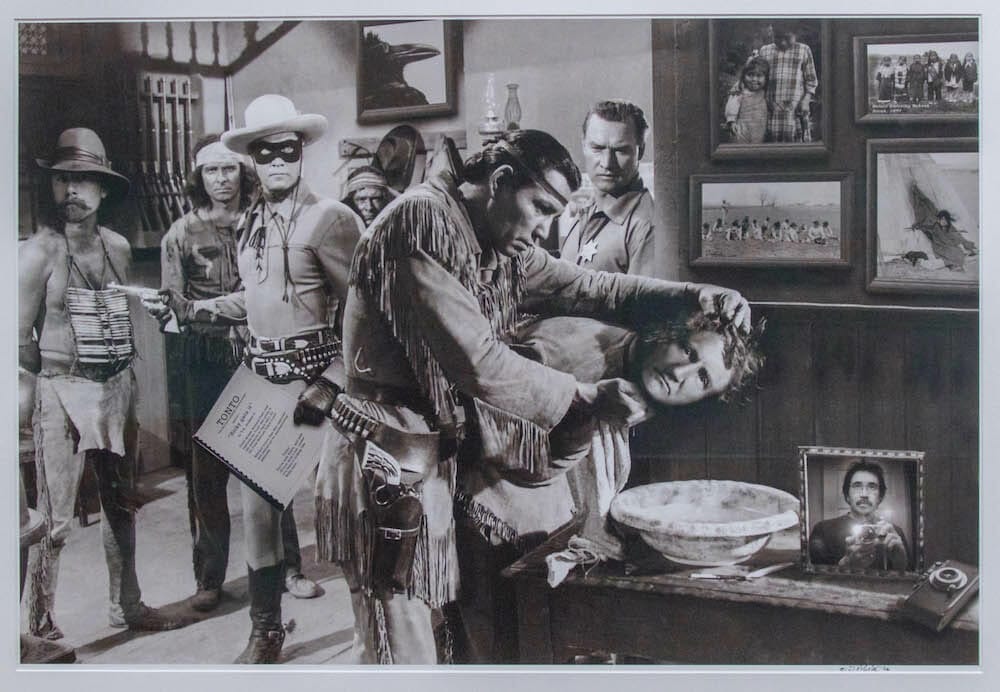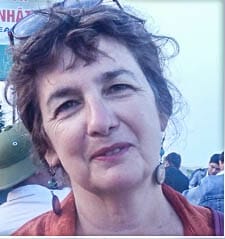
On an opening day of their holiday tradition exhibit Jingle Rails, it was easy to see how Eiteljorg Museum is anchored in the Indianapolis community that is perhaps its first audience. A traveler en route to other destinations, with but a few hours to take it all in, will likely concur with this writer/photographer team. Eiteljorg Museum has an abundance of corners that seem to merit a longer linger.
Galleries of bright Western Art chock with brilliant colored paintings--- many of which are landscapes—all seem to share an ability to bottle the sun in Western skies. A peek in these galleries shows them to be spacious and comfortable showcases for the treasures within. In other corners you find works by modern Native American artists, who explore contemporary art through the lens of diverse Native American experiences.
Eiteljorg Museum of American Indians and Western Art Hosts Traveling Smithsonian Photography Exhibit -- of For a Love of His People: The Photography of Horace Poolaw
Now through April 5, 2020, however, it is the Smithsonian’s traveling exhibition of Horace Poolaw’s black and white photography that is, in this writer’s view, the top reason to put a visit to the Eiteljorg Museum on your calendar. Through this photographer’s lens, we get an authentic feel for mid-20th Century life among his tribe, Kiowa, and the other Plains tribes that the US government forced together in Oklahoma.
Poolaw’s is a loving lens. By this writer’s lights, his work is a stealthy insurrection taking on stereotypes of Native Americans you likely didn’t even know you had. We meet young Native American children playing cowboy in costumes. Much like today’s Muslin women opting to wear the Hajib as a route to reclaim their cultural and religious identity, we see middle aged and older couples posing in full regalia. Female rebels also came in the form of young beauties sporting makeup and glamour, instead of the plain Jane White woman style that others tried to impose on them. We see football players and baseball teams, learning that these sports replaced the traditional ones that had come before. We learn from the photo captions that many had to pose for long periods of time to enable their uncle/father/cousin etc. (Poolah) to capture their family feel, with the limited financial resources for film that he could muster. And mainly, we see many soldiers, in uniform or fallen, captured by former US Army Air Force photographer Poolah to tell the dramatic story of sacrifice for the country that stole their lands.
With a light touch, the curators of this exhibit – Tom Jones (Ho-Chunk) and Nancy Marie Mithlo (Chiricahua Apache)—seem to ensure that the overall impact of For a Love of His People: The Photography of Horace Poolaw is almost incendiary. What are we to make, for example, of the Kiowa and Comanche delegation offering a prayer at the inauguration of a staunchly segregationist Governor—who happens to be married to a Chickasaw woman? Aha, thinks this writer- the message is think again.
Unwinding from Poolah’s exhibit, even a scattershot rapid walk by viewing of select museum holdings does convey how art is everywhere in Native American cultures. It’s not a large museum, but it seems to try to represent nearly every Native American nation.
If you can’t make it to the larger Smithsonian National Museum of the American Indian, Eiteljorg might be a good quick survey of art and artifacts Native American.
RECOMMENDED
Where:
Eiteljorg Museum
500 West Washington Street
Indianapolis, Indiana
When:
Monday through Saturday: 10:00 a.m. – 5:00 p.m.
Sunday: Noon – 5:00 p.m.
Closed: Thanksgiving, Christmas & New Year’s Day
Tickets:
$15 (discounts for children, youth, seniors)
All black and white photography is by Horace Poolah, except when otherwise indicated, here photographed by Peter Kachergis.
All other images courtesy of Eiteljorg Museum, unless otherwise indicated.
For more information visit the Eiteljorg Museum website.

About the Author: Amy Munice
Amy Munice is Editor-in-Chief and Co-Publisher of Picture This Post. She covers books, dance, film, theater, music, museums and travel. Prior to founding Picture This Post, Amy was a freelance writer and global PR specialist for decades—writing and ghostwriting thousands of articles and promotional communications on a wide range of technical and not-so-technical topics.































